Bb2.1
I did not document the words of Metoro at Bb2-1 because he
connected this glyph with the following (Bb2-2).
And he similarly paired together the last two glyphs
in line Bb1 by way of his mea ke.
 |
 |
 |
 |
 |
 |
 |
|
421 + 29 = 450 |
Bb1-30 |
Bb1-31 |
Bb2-1 (32) |
Bb2-2 |
Bb2-3 (455) |
Bb2-4 |
|
kukurutou
- kua mai ïa - ki to
vero |
kua haga i te
mea ke |
e
kua mea i te
mea ke |
Parei |
e
niu
- tapatu - kua hua
ko te kava |
|
Tou.
In ancient times, a
tou was
someone who had
recovered from an
epidemic, but whose
illness meant that
someone else in the
family had to die.
The tou were
regarded as portents
of evil. Toutou,
lush; fertile
(land).
Toûa: Egg yolk;
the colour yellow;
soft, fibrous part
of tree bark;
toûa mahute,
mahute fibres.
Vanaga.
Toua: Wrath,
anger, rage,
revenge, battle,
combat, debate,
dispute, dissension,
uprising, revolt,
quarrel, fight,
hostility (taua);
toua rae, to
provoke, rae toua,
to open hostilities,
toua kakai,
to rebuke, tuki
toua, to stir up
dissension;
totoua,
hostility;
hakatoua,
fighter, warrior. P
Mgv.: toua,
war, battle. Mq.:
toua, war,
dispute, quarrel.
The form with o
is found only in
these three
languages, taua
is found in the
general migration,
Rapanui is the only
speech which has
both. Toutou,
fertile (tautau);
hakatoutou,
to fertilize. Mq.:
taútaú,
fertile. Toùvae,
to run;
hakauruuru
toùvae, id.
Churchill.
Vero.
To throw, to
hurl (a lance, a
spear). This word
was also used with
the particle kua
preposed: koía
kua vero i te matá,
he is the one
who threw the
obsidian [weapon].
Verovero, to
throw, to hurl
repeatedly, quickly
(iterative of
vero). Vanaga.
1. Arrow, dart,
harpoon, lance,
spear, nail, to
lacerate, to
transpierce (veo).
P Mgv.: vero,
to dart, to throw a
lance, the tail;
verovero, ray,
beam, tentacle. Mq.:
veó, dart,
lance, harpoon,
tail, horn. Ta.:
vero, dart,
lance. 2. To turn
over face down. 3.
Ta.: verovero,
to twinkle like the
stars. Ha.:
welowelo, the
light of a firebrand
thrown into the air.
4. Mq.: veo,
tenth month of the
lunar year. Ha.:
welo, a month
(about April).
Churchill. Sa.:
velo, to cast a
spear or dart, to
spear. To.: velo,
to dart. Fu.:
velo, velosi,
to lance. Uvea:
velo, to cast;
impulse, incitement.
Niuē:
velo,
to throw a spear or
dart. Ma.:
wero,
to stab, to pierce,
to spear. Ta.:
vero,
to dart or throw a
spear. Mg.:
vero,
to pierce, to lance.
Mgv.: vero,
to lance, to throw a
spear. Mq.:
veo,
to lance, to throw a
spear. Churchill 2.
|
 |
 |
 |
3
|
 |
 |
|
 |
 |
|
Bb1-22 (443) |
Bb1-23 |
Bb1-24 |
ku pepepepe te
manu |
Bb1-29 (450) |
Bb1-30 |
Bb1-31 |
|
THE TAIL |
DEC 17
(351) |
18 (416 -
64) |
22 (4 * 89) |
23 (357) |
X-MAS EVE |
X-MAS
DAY |
|
Febr 18 (414) |
19 (50) |
20 (416) |
24 (356 +
64) |
25 (421) |
26 |
27 (58) |
Pare.
Half raw, badly
cooked. Parehaoga,
food prepared in the
earth oven (umu
parehaoga) for a
feast or for people
whose help is needed
for some work or for
organizing a feast.
Parehe,
piece, bit; to fall,
break into pieces.
Parei, dirty,
to have a dirty face
and eyes, someone
who gets up without
washing. Parera,
sea bottom. Vanaga.
Ta.: Pare, a
fort, a place of
refuge. Ma.:
parepare, a
breastwork in a
stockade. Mgv.:
Pare, a covering
for the head. Mq.:
pae, id. Sa.:
pale, id.
Ma.: pare,
id. Churchill.
Parehe, to
break, a crack.
Parei, 1.
(paré), dressed up.
2. To sparkle (of
the eyes). Parera,
1. A shallow, a
reef. 2. Deep water,
profound, gulf;
parera tai, deep
sea; tai parera,
high tide; hohonu
parera,
fathomless,
unsoundable. 3. To
lead astray.
Hakaparera, to
frighten, to scare.
Pareu, skirt,
apron. Mgv., Mq.,
Ta.: pareu,
loincloth, apron.
Pau.: Parego,
to drown oneself.
Ta.: paremo,
drowned. Ma.:
paremo, id.
Tapa.
1. Side, corner,
edge; he-hakarere
a te tapa, to
leave aside, to
abandon; a te
tapa mata'u o te
haga, on the
right-hand side of
the bay. 2. Tapa
mahute, piece of
mahute
material; this term
is very common
nowadays, but it
seems probable that
it was borrowed from
the Tahitian in
replacement of
parehe mahute.
3. To recount
the years, the
months; to recount
happenings of many
years ago, in verses
called manu,
in which a murderer
confided his crime
to his victim's
relatives; the
murderer himself
asked a brother or a
friend to compose
those verses: e
tapa koe itooku
manu, compose my
manu. The
expression tapa
ite manu was
also used of a group
of people expressing
the desire to kill
someone. 4.
Tagata tapa ta'u,
according to
traditions, this
term referred to the
scribes who recorded
births on the
tablets. Vanaga. 1.
Border, fringe,
edge, groin, cloth,
clothing, dress,
garment. Tatapa,
lateral, bank.
Tapatapa, edge.
P Mgv.: tapa,
the edge of the bast
cloth, bast cloth in
general. Mq.:
tapa, fringe,
cloth. 2. To name,
to mention, to
count, to calculate,
to reckon, to
number, to figure
up, to recapitulate;
tapa ki te igoa,
to take a census;
tapa igoa, list.
Tatapa, to
count, to number, to
reckon. Tapatapa,
to mention. P Mgv.:
tapa, to give
a pet name. Mq.:
tapatapa, to
recite, to invoke;
tatapa, to
take the name of
some one, to
announce by name.
Ta.: tapa, to
call by name.
Churchill. Mq.:
Tapaau, coconut
leaf plaited to
serve as a mat. Sa:
tapa'au, a
coarse coconut leaf
mat. Tapatai,
a dweller on the
strand. Ma.:
tapatai, beach.
Churchill.
|
|
υ Oct. (341.0), α/91
Lac. (341.1),
HOMAN (Hero) = ζ
Pegasi,
β Piscis Austrini
(341.2), ν Tucanae
(341.5),
υ Aquarii
(341.9) |
η Aquarii
(342.1),
σ Gruis (342.4),
SITULA (Water-jar) =
κ Aquarii
(342.7)
*301.0 = *342.4 -
*41.4 |
ε Piscis Austrini
(343.5), ο Pegasi, β
Gruis (343.8) |
ρ Gruis (344.0),
MATAR (Rain) = η
Pegasi
(344.2), η Gruis
(344.6), β Oct.
(344.7) |
λ Pegasi (345.0), ξ
Pegasi (345.1), ε
Gruis (345.3), τ
Aquarii (345.7), ξ
Oct. (345.8), μ
Pegasi (345.9) |
ι Cephei (346.0), λ
Aquarii, γ Piscis
Austrini, σ Pegasi
(346.5) |
SCHEAT AQUARII = δ
Aquarii
(347.0),
ρ
Pegasi (347.2),
δ
Piscis Austrini
(347.4),
FOMALHAUT (Mouth of
the Fish) =
α
Piscis Austrini,
τ
Gruis (347.8)
*306.0 = *347.4 -
*41.4 |
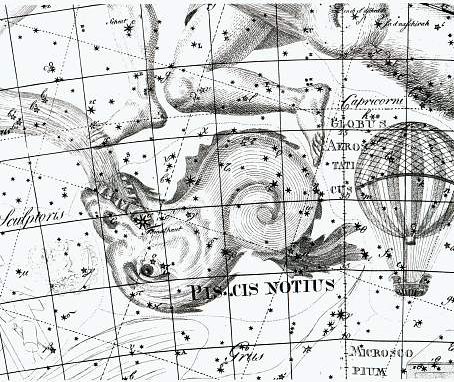 |
|
Febr 25 (421) |
26 (396 + 26) |
(31 + 27 = 58) |
28 (360 + 64) |
(360 + 65) |
(360 + 66) |
(360 + 67) |
|
p Carinae (159.3) p
Carinae (159.3) |
φ Hydrae (160.3) |
No star listed (161
→
φ) |
VATHORZ POSTERIOR =
θ Carinae
(162.1),
PEREGRINI = μ
Velorum,
η Carinae
(162.6) |
ν Hydrae (163.1) |
No star listed (164)
ALTAIR (α
Aquilae) |
Wings-27 (Snake)
η
Octans (165.4),
ALKES (Shallow
Basin) =
α
Crateris
(165.6)
*124.0 = *165.4 -
*41.4 |
|
Aug 27 (239) |
28 (422 - 182) |
29 (58 + 183) |
30 (242) |
31 |
Sept 1 |
2 (245) |
|
Corresponding right
ascension days in
the Golden Age of
the Bull: |
|
DEC 23 |
X-MAS EVE |
(359 = 423 - 64) |
26 (177 + 183) |
27 |
28 |
29 (363) |
|
JUNE 23 |
ST JOHN'S DAY |
25 (176) |
26 (6 * 29½) |
27 |
28 |
29 (180) |
From the 'sketch'
('butterfly', pepepepe)
at
*340 (where Procyon
culminated at 21h) - i.e.
from when the Sun was at the
4th Son behind the
King - to *344 at the
Rain star (Matar, η
Pegasi) in February 28 (59 =
2 * 29½) there might have been one 'branch'
('bough', 'limb') missing
from the World Tree
... I already knew that the ceiba
tree was the model for the sacred World Tree of the
Maya, but I had never seen one in flower when I knew
what I was looking at. I was really excited because
normally you can't see the blossoms even if you're
there when the tree is in blossom. The fully mature
trees are hundreds of feet high. and the blossoms
are very small. 'It's a ceiba', I chirped and began
looking for a branch low enough to see one of the
blossoms up close. Joyce Livingstone, a retired
teacher, did the logical thing. She bent over,
picked up a fallen branch, and held it out for me to
see. I was too excited and full of myself to listen.
She tapped my arm more insistently and still I
didn't hear her. Finally, in frustration, she
grabbed my wrist and raised her voice. 'Will you
look at these?' she said, waving the branch, and
finally I did. What I saw stunned me, for in her
hand lay a perfect replica of the earflares worn by
the Classic Maya kings. Suddenly I understood the
full symbolism of so many of the things I had been
studying for years. The kings dressed themselves as
the Wakah-Chan tree, although at the time I
didn't know it was also the Milky Way ...
- and if
so, then presumably it was
represented by Bb1-29
because
kukuru toua was the
5th and missing manu tara child level -
for the cycle of the
Earth around the Sun
measured not
365 but 364 whole days.
... Another name for Mercury was
Hermes and Hermes Trismegisthos
(thrice-mighty) could have referred to the fact that
there were 3.141 * 115.88 = 364.0 days for the cycle
of the Earth around the Sun. Although the calendar
has 365 days for a year this is due to the fact that
the Earth has to turn around an extra day in order
to compensate for how the direction to the Sun
changes during a year ...
The extra day was special, for it represented and
additional
completed extra cycle (in for instance the expression 'within a
year and a day'):
... You are the one who shall
stay here. We, on the other hand, have to turn
around. Makoi replied, All right with me!
Then Ira continued to speak to Makoi:
Tomorrow, when it grows light, set out and name the
places beginning with Apina. Makoi
replied, How shall I give the names? Again Ira
spoke, In Hiva are the names that are to be
taken to name (the places of the new land). It grew
light and Makoi got up. He set out and came
to Apina. When he arrived there, he gave the
name This is Apina Iti, this is Rapa Kura. He
went on and came to Hanga O Ua. He gave the
name This is Hanga O Ua of the Beautiful Wave
(vave renga). Makoi went on, giving
names, until he had made a (complete) circle around
both sides (of the island). In Apina Nui a
stone (maea) was erected, saying that the
naming was done on a (round) trip during a single
day ...
[E:37-38]
Makoi was there, but he would stay behind.
After
Terminalia (day 426) came
Bissextum
(ku pepepepe te manu):
... Although exceptions exist, the first day of the
bis sextum (February 24) was usually regarded
as the intercalated or 'bissextile' day since the
third century. February 29 came to be regarded as
the leap day when the Roman system of numbering days
was replaced by sequential numbering in the late
Middle Ages ...
 |
 |
 |
 |
 |
 |
 |
|
Bb1-22 (443) |
Bb1-23 |
Bb1-24 |
→ 5 * 5 * 5 |
Bb1-26 |
Bb1-27 |
Bb1-28 (449) |
|
eko te manu
kua mau - ki to ahi |
kua haga - te
mea ke |
kua hupe |
ma te maitaki |
kua rere te
manu |
vae oho |
ku pepepepe te
manu |
|
Hupee. Mucus; hupeehupee,
asthma. T Pau., Ta.: hupe,
mucus. Churchill. Ta.: Hupe,
mucus. (Sa.: isupē,
id.) Ma.: hupe,
id. Churchill. Rhume, air
froide. Jaussen according to
Barthel.
Pepe.
1. A sketch. 2. Bench,
chair, couch, seat, sofa, saddle;
here pepe, mau pepe, to
saddle; noho pepe, a
tabouret. Pepepepe, bedstead.
3. Pau.: butterfly. Ta.: pepe,
id. Mq.: pepe, id. Sa.:
pepe, id. Ma.: pepe, a
moth; pepererau, fin, Mgv.:
pererau, wing. Ta.:
pereraru, id. Ma.: parirau,
id. Harepepe, kelp. Here
pepe, to saddle. Churchill. Sa.:
pepe, a butterfly, a moth, to
flutter about. Nukuoro, Fu., Niuē,
Uvea, Fotuna, Nuguria, Ta., Mq.:
pepe,
a butterfly. Ma.: pepe,
a grup, a moth; pepepepe,
a butterfly; pepeatua,
a species of butterfly. To.:
bebe,
a butterfly. Vi.: mbèbè,
a butterfly. Rotumā: pep,
id. Churchill 2. Mq.:
Pepepepe, low, flat. Ha.:
pepepe, id. Churchill. |
|
VISIBLE CLOSE TO THE FULL MOON: |
|
Rooftop-12
(Swallow)
22h (334.8)
KAE UH (Roof) = ο Aquarii
(334.0),
AL KURHAH (White Spot) = ξ Cephei
(334.4),
SADALMELIK (Lucky King) = α Aquarii,
AL DHANAB (The Tail) = λ Gruis
(334.6), ι Aquarii, ν Pegasi (334.7)
*293.0 = *334.4 - *41.4 |
ι
Pegasi (335.0),
ALNAIR (The Bright One) =
α
Gruis
(335.1),
μ
Piscis Austrini,
υ
Piscis Austrini (335.3),
WOO (Pestle) =
π
Pegasi
(335.7),
BAHAM =
θ
Pegasi (Good Luck of the Two Beasts),
τ
Piscis Austrini (335.8) |
ζ
Cephei (336.2),
λ
Cephei (336.3), -/270 Lac.
(336.7), λ Piscis Austrini (336.8) |
μ
Gruis (337.0),
ε
Cephei (337.2), 1/325 Lac. (337.3),
ANCHA (Hip) =
θ
Aquarii (337.4),
ψ
Oct.
(337.5), α Tucanae (337.9)
*296.0 = *337.4 - *41.4 |
Al Sa'ad al
Ahbiyah-23 (Lucky Star of Hidden
Things) /
Shatabisha-25
(Comprising a Hundred Physicians)
ε
Oct. (338.1),
ρ Aquarii
(338.2), 2/365 Lac. (338.5),
SADACHBIA =
γ
Aquarii
(338.6),
π
Gruis (338.9) |
β/172
Lac. (339.2),
4/1100 Lac. (339.4),
π Aquarii
(339.5)
*298.0 = *339.4 - *41.4
CASTOR (α Gemini)
|
δ
Tucanae (340.1),
ρ
Cephei (340.2),
ν
Gruis (340.3),
ζ
Aquarii,
δ
Gruis (340.4),
5/1100 Lac.
(340.7), σ Aquarii, 6/650 Lac.
(340.9)
*299.0 = *340.4 - *41.4
PROCYON (α Canis Minoris) |
|
... However, the dislocation
[of the hip of Tantalus - like that of other sacred kings] may have been
produced - and it is likely that still another method [than '... produced by
wide abduction of the thighs ... when a person embarking in a boat remains
undecided whether to get in or remain on land.'] was practised on a
hill-top, not beside a river - there was a taboo in Canaan on eating the
flesh around the thigh-bone, as is expressely stated in Genesis in
the story of Jacob's wrestling at Peniel ... |
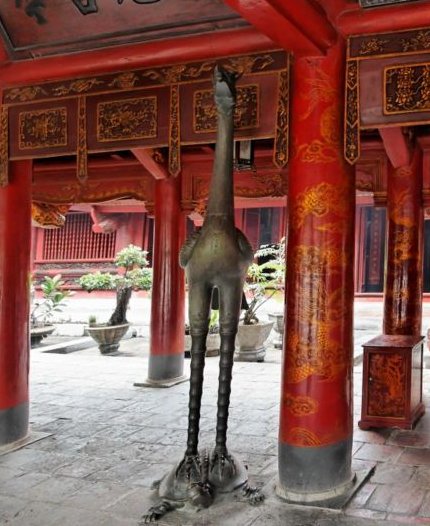
... Horapollo, the grammarian of
Alexandria, about AD 400, tells us
that the crane was the symbol of a
star-observer in Egypt
... Grus has as an
alternative name Flamingo (a name
which sounds quite similar to that
of the bird Phoenix) which obviously
is based on 'flame'.
Phoenicopterus (the Flamingo) is
characterized by its red feathers.
Wikipedia: ... from Greek
φοινικόπτερος
meaning 'purple wing'. Purple is the
colour for kings and 'phoenix'
should therefore mean 'purple, the
colour of the king' ... |
|
Febr 18 (414) |
19 |
20 (*336) |
21 |
22 (447 - 29) |
23 (Terminalia) |
24 (420) |
|
Al Jabhah-8
(Forehead) /
Maghā-10
(Bountiful) /
Sharru-14 (King)
10h (152.2)
AL JABHAH =
η
Leonis (152.4),
REGULUS (Little KIng) =
α
Leonis
(152.7)
*111.0 = *152.4 - *41.4 |
λ Hydrae (153.2) |
ADHAFERA = ζ
Leonis,
TANIA BOREALIS (Northern Gazelle) =
λ Ursae Majoris, SIMIRAM = ω Carinae
(154.7) |
ALGIEBA (The Mane) =
γ
Leonis,
q Carinae (155.5) |
TANIA AUSTRALIS (Southern Gazelle) =
μ
Ursae Majoris
(156.0),
GHOST OF JUPITER = NGC3242 Hydrae
(156.8) |
Extended
Net-26b (Ox)
μ
Hydrae
(157.1) |
Maru-sha-arkat-Sharru-15 (4th Son
behind the King)
SHIR (Possessing Luminous Rays) =
ρ
Leonis
(158.9) |
|
Aug 20 |
21 |
22 |
23 (235) |
24 |
25 |
26 |
|
Corresponding right ascension days
in the Golden Age of the Bull: |
|
DEC 16 (350) |
17 |
18 |
19 |
20 (354) |
21 (SOLSTICE) |
22 (420 - 64) |
|
JUNE 16 |
17 |
18 |
19 (170) |
20 (354 - 183) |
21 (SOLSTICE) |
22 (238 - 64) |
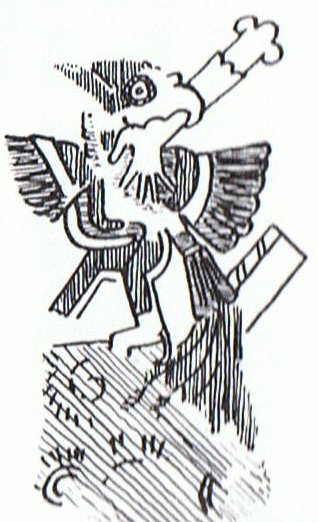
... The four bereaved and
searching divinities, the two mothers and their two
sons, were joined by a fifth, the moon-god Thoth
(who appears sometimes in the form of an ibis-headed
scribe, at other times in the form of a baboon), and
together they found all of Osiris save his genital
member, which had been swallowed [→
Rooftop] by a fish
...
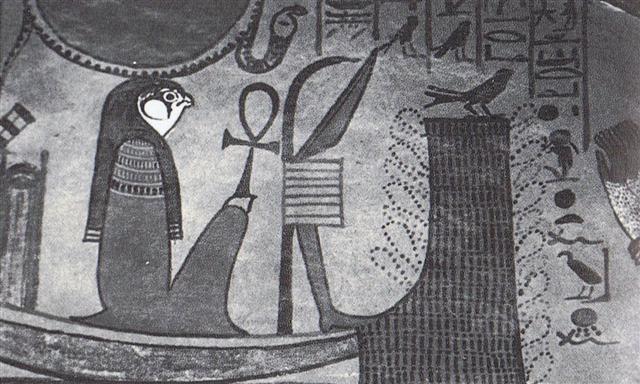
From the time the Sun was at the
Southeast Star in
the Crab, i.e. when the
Girl was at the Full Moon, up to and
including the end
of the Ox there were 355 (DECEMBER 21) - 330 (NOVEMBER 26) +
1 = 26 right ascension days. Here the Golden Bull had turned
into an Ox:
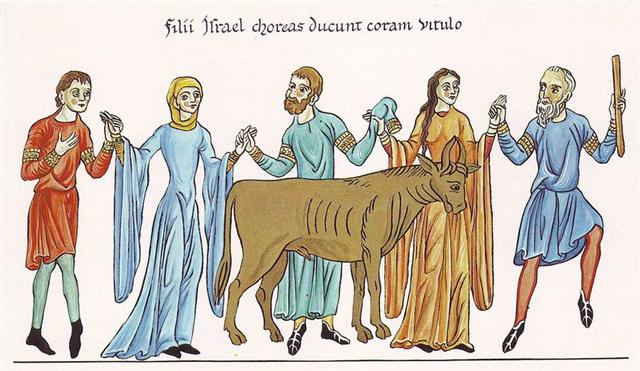
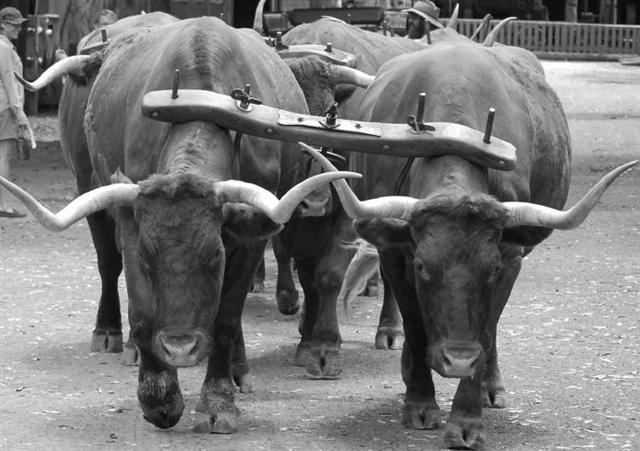
Clearly the idea of the Mouth of the Fish drinking fresh water
should be contrasted with the idea of unsatisfied thirst, i.e.
of the shallow empty basin waiting for
Sirius after Agasthya (Canopus).


Could it possibly be ρ Leonis
we are seeing in the day after the solstice behind the back of
the emperor of China?
|














